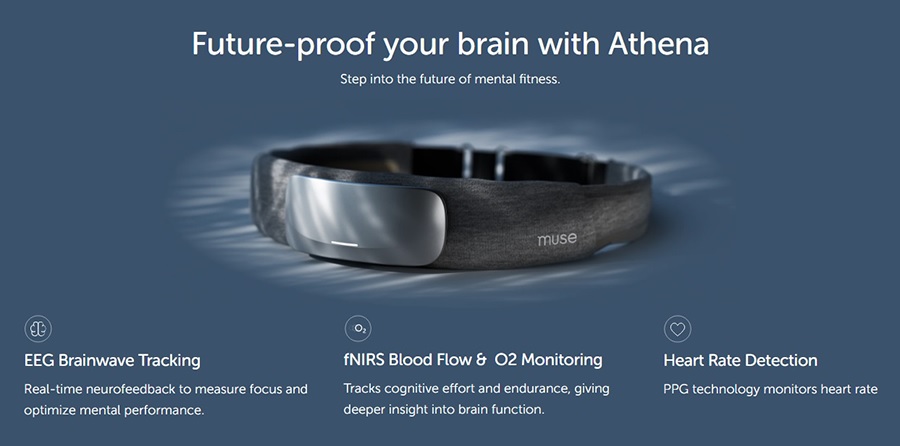
The workday ends on the calendar before it ends in your nervous system. Emails echo in your head, shoulders stay braced, and bedtime arrives with a brain that is still on patrol. A better evening is not just a luxury. It is the bridge between today’s effort and tomorrow’s focus. The right sequence of small steps, done kindly and consistently, helps your body turn the stress dial down so sleep has a fair chance and mood steadies for the morning.
This protocol shows how to land the day without elaborate gear or two hour routines. You learn a simple timeline, why each step helps, and how to personalize when life gets messy. We use three anchors, breath, light, and movement. We add light feedback where it helps, heart rate variability and basic EEG coaching, then finish with a wind down that does not feel like homework. Think of it as closing the tabs in your body so your brain can idle calmly.
Contents
Why Evenings Matter for Stress Recovery
Stress is a full body state, not just a mood. During the day, sympathetic activity rises to handle deadlines and decisions. That is useful, as long as there is a matching off ramp. Evenings are that off ramp. When you lower arousal in the evening, you set up a healthier overnight pattern, steadier heart rate variability, a friendlier cortisol curve, and fewer overnight awakenings. When you skip the off ramp, the body tries to process the day while you lie in bed, which often shows up as a busy mind and restless legs.
Three pieces guide our plan. First, recovery is faster when you change state with the senses. Breath, posture, light, and movement send clear signals to the brain that the day has shifted. Second, your brain handles transitions poorly when you switch from high stakes work to stimulating screens with no buffer. Third, sleep is a process that starts two to three hours before you close your eyes. If you shape that window, you tend to fall asleep faster and wake up less.
There is also a social piece. Evenings carry family needs, errands, and the leftovers of the workday. Good protocols respect that reality. We will use short blocks that fit around dinner and chores, and we will repeat the parts that matter most. The goal is not perfection. The goal is a steady rhythm that your future self can follow without resentment.
The Evidence Landscape, What Helps and Why
Several low effort habits have support across physiology and behavior. Slow breathing around five to six breaths per minute increases the variation between heartbeats, which reflects a flexible autonomic system. Gentle movement improves circulation and helps process stress hormones. Warm light in the late evening supports melatonin, while bright blue heavy light close to bedtime tends to delay sleepiness. A protein forward dinner with steady carbohydrates reduces the midnight snack instinct and prevents wide glucose swings that wake you at three in the morning.
Mental offloading matters as much as biology. Writing a two minute list of tomorrow’s top task reduces rumination. So does a brief conversation that ends with a plan rather than a rehash of complaints. If you like feedback, heart rate variability biofeedback can coach calm breathing patterns in real time. EEG based tools can coach steadiness of attention during a short meditation. The fNIRS view of blood oxygenation is mostly a lab tool, yet it teaches a helpful lesson, sustained effort leaves a vascular footprint, so you should expect to budget recovery time.
On the flip side, habits that look relaxing often keep arousal high. Alcohol shortens sleep latency at first, then fragments sleep later in the night. High intensity exercise very late in the evening can push bedtime out. Intense social media browsing adds novelty and social comparison that keep your brain on watch. None of these are moral issues. They are levers you can adjust. When you pull the right ones, your evenings feel easier.
A Two Hour Evening Protocol You Can Actually Keep
Use this as a template on typical weekdays. If your schedule is wild, borrow the spirit and shorten as needed. The times are approximate. The order matters more than the clock.
Minutes 0 to 10, change state on purpose
- Arrival breath: sit or stand tall, breathe in for four, out for six, for two minutes. Exhales do the heavy lifting for calm.
- Gaze reset: look at a distant point out a window for 30 seconds. This widens your visual field and drops urgency.
- Hands and jaw: unclench your jaw, then rub palms together until warm. Warmth plus sensation tells your body it is safe to stand down.
Minutes 10 to 30, light movement and decompression
- Ten minute walk outside if possible, or a gentle indoor circuit. Keep the pace conversational. The aim is circulation and rhythm.
- Posture reset with three long stretches, calves against a wall, hip flexor lunge, and a chest opener. Breathe slowly through each one.
Minutes 30 to 45, admin buffer
- Skim messages once with a timer for ten minutes. Capture tasks on paper. Stall replies until tomorrow unless truly urgent.
- Write a one line plan for tomorrow’s first task. Your brain relaxes when it knows where to start.
Minutes 45 to 75, dinner and connection
- Dinner that favors protein, vegetables, and steady carbs. Keep heavy fats earlier in the day if sleep runs hot.
- Talk or play for ten minutes with someone you care about. If alone, call a friend or play a short instrument piece. Positive social signals help the nervous system close the work channel.
Minutes 75 to 90, HRV breathing or feedback practice
- Breathing option: five to eight minutes at a comfortable slow pace, in four, out six, or similar. Sit tall and relax your shoulders.
- EEG coaching option: a five minute meditation with audio cues. The Muse headband is one consumer option. It uses EEG sensors to provide simple feedback during attention practice. It is not a medical device, and it does not diagnose conditions, yet many people find it useful for building a consistent evening routine.
Minutes 90 to 120, wind down and lights
- Screen rules: switch to warmer screen settings and lower brightness. Aim to finish stimulating media 30 to 45 minutes before bed.
- Hot to cool: a warm shower or bath followed by a cooler bedroom supports sleepiness. The body likes a small drop in temperature near bedtime.
- Gratitude plus offload: write two lines, one small good thing from the day and one line about tomorrow’s starting point. Close the notebook. Done is the key word.
If your evenings are shorter, keep the first ten minutes, a five minute movement piece, and the final wind down. Those three touchpoints do most of the work.
Tools and Feedback, Keep It Simple
Feedback is useful when it lowers guesswork, not when it becomes another chore. For heart rate variability, the simplest route is paced breathing. Some apps show a breathing pacer and a basic HRV metric. Treat the number as a compass, not a grade. If the value trends upward across weeks and you feel calmer, you are on track. For EEG, use short sessions. Five minutes before wind down is enough. Many people notice that a brief coaching session helps them feel the moment when attention settles, which makes pre sleep reading or quiet time smoother.
Light meters and wearables can be helpful, yet the basics still rule. Keep your room dim in the last hour. Keep the bedroom cool and dark. Move screens farther from the eyes rather than raising brightness. If a wearable shows alerts that increase anxiety, turn off push notifications and check once per day. The point is to support your nervous system, not to create a new stream of data to worry about.
If you enjoy experiments, try a one week A and B test. Week A, add a ten minute walk after work. Week B, skip the walk and add ten minutes of quiet stretching instead. Track sleep latency and morning mood with a simple one to ten scale. Keep the winner. Small, friendly tests beat complicated stacks of supplements you forget to take.
Troubleshooting and Personalization
Life happens. Here is how to adjust without losing the thread. If you work late or handle evening childcare, shrink the protocol into three non negotiables, two minutes of arrival breath, a brief movement piece, and a ten minute wind down with warmer light. If you exercise in the evening, finish vigorous work at least two hours before bed when possible, then follow with a shower, a light snack, and a quiet half hour. If pain or rumination spike at night, add a four minute body scan in bed, slow attention from toes to scalp, with long exhales. If screens are required late, wear amber glasses or enable warm screen modes and keep brightness just high enough to see comfortably.
Nutrition tweaks help many people. Limit alcohol to earlier in the evening or skip on work nights if sleep is fragile. If you wake hungry at three in the morning, try a small protein and complex carb snack at dinner, yogurt with berries or eggs with a small piece of toast. Caffeine timing matters, keep it earlier in the day or limit to small doses before noon. If late meetings run long, protect five minutes for a reset before bed, even if it means a slightly later bedtime. A clean landing beats a fast crash.
Get help when needed. If snoring, gasping, or nightly awakenings are common, talk with a clinician about sleep disorders. If mood is heavy for weeks, or anxiety feels unmanageable, professional support changes the slope of recovery. Feedback tools and home routines are helpful supports. They are not substitutes for medical care when medical care is called for.

